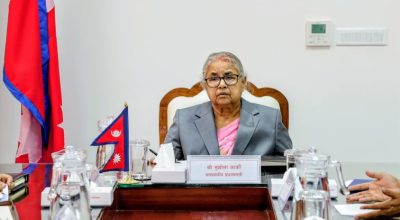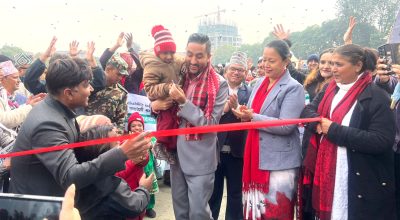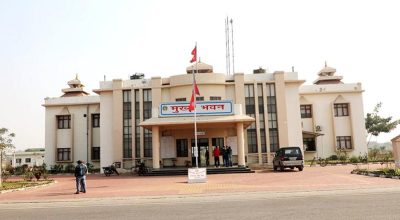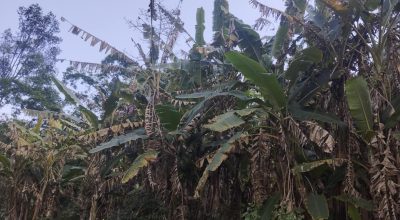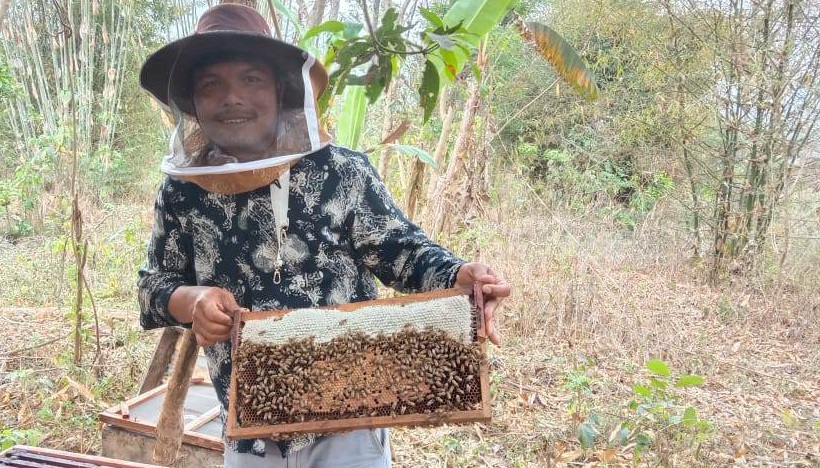
Hetauda, July 5: Unlike material things given away in dowry to daughters in marriage generally, Chepang, the indigenous nationalities of Nepal, categorised as a highly marginalised group present the ‘chiuri’ trees (Diploknema butyracea).
The nomadic people continued their age-old tradition of gifting chiuri trees in marriage of their daughters. The marginalised community that is backward in the human development index lives in and around forest areas, and are largely dependent on agricultural and forest products for livelihood. The community worships nature and regards chiuri trees as their property. The tree has significant cultural and livelihood associations with the community and has connections with them from birth to death.
They transfer the chiuri tree to their children as parental properties. They some 37 years ago registered and acquired ownership certificates over chiuri trees from the Government of Nepal. Recognising their relation with the tree, the government registered chiuri trees in their name and distributed them its ownership certificates.
Ownership certificates of around 200 chiuri trees have been distributed in Makawanpur district, according to the local Silinge community forest. A House of Representative member, Gobinda Ram Chepang said the community has accorded high importance, and regarded chiuri trees as properties since ages, and gives away the tree in dowry in marriage.
Dishes of bats that prefer nectar of chiuri flowers have been special for the community as well, he said.
Most of the Chepangs live in remote hilly settlements of Dhading, Chitwan, Makawanpur and Gorkha district. The marginalised community in terms of socio-economic and political indicators has faced significant transition in their livelihood over time from a nomadic group to shifting cultivation and to subsistence agriculture.
As farming alone is not enough, it has however adopted livelihood strategy, farming along with depending on forests and wage workers among others.
The community is getting attracted to beekeeping and livestock farming despite being primarily dependent on agricultural and forest resources for livelihood, said Gobinda Ram.
They are living scattered near rivers for livelihood, he said. According to him, the community is highly dependent on forest resources, chiuri and dishes made from it, fruits, and edible roots and tubers for a living.
They are traditionally engaged in fishing, hunting bats and wild animals, apart from earning incomes from making buckets, and tumplines made from bamboo and jute, and brooms made from broom grasses (Thysanolaena maxima).
Lately, they have been also attracted to beekeeping. Aita Singh Praja (Chepang) of Silinge of Raksirang Rural Municipality has kept honeybees. He has also grown chiuri trees, a major source of nectars and pollens for honeybees to collect. “Chiuri trees can grow on the steep area, in the open near gardens, the grazing field, and pastures and the slash and burn farming where bees visit to collect nectars and pollens. I have been engaged in beekeeping for the past some years,” he said.
Also chairperson of the Silinge community forest users’ group, he got a chiuri tree in dowry in his marriage, he recalled.
They also kill bats for meat, he said. The Chepangs might take chiuri trees importantly as they have a link with them, and are used as food and available easily, said assistant forest officer Basanta Raj Gautam. The trees are found in Raksirang, Kheranga, Kailash, Sarikhet, Palase, Namtar, Kalikatar, Bhaise, Makawanpurgadhi and Bakeya, he said.
Places including Siddhi, Korak, Lothar, Shaktikhor, Kahule, Darechowk, Chandibhanjyang and Ichhamanakamana of Chitwan district, and the lower belt of Chure and Mahabharat ranges between the Manahari river of Makawanpur district to the Kayar river of Chitwan are a pocket area for the trees, he said.
Many chiuri trees at Rorang and Dhusha of Dhading died due to diseases, and in some cases, they were cut down by the Chepangs for firewood, according to local people.
Chiuri is used for multiple purposes. Fat is extracted from the seeds to make chiuri ghee. Chiuri ghee is used as cooking oil, body lotion and medicines, and as fuel for lamps. The fruit is eaten fresh, and use for making alcohol. Chiuri tree is used for firewood.
Their traditional agriculture barely helping them to make a living, Chepang women have been lately engaged in beekeeping. They have raised honeybees being associated with the local Janaekata community forest users’ group. They have made good incomes from it. The Devitar women farmers’ group has been formed to raise livelihood of the Chepang community targeting Chepang women.
Chepang women who would entirely depend on collecting edible roots and tubers for a living have been gradually aware about the exploration of other job alternatives and taking much benefit from group working, said the group’s secretary Sabita Praja. “It is easier for us to find the market for bee honey working with a team,” she said. Sanu Maya, 60, of Raksirang has not got her time saved for her household chores and sending her children to school by engaging in beekeeping. She would collect edible roots and tubers that consume time for a living.
She called for the Federation of Community Forestry Users Nepal (FECOFUN) to take initiatives for the local level to provide monetary assistances for the Chepangs to raise livestock as well.
Ram Bahadur Praja has demanded monetary assistances for them to start fish farming so the community could be economically independent. He suggested bringing many income generation programmes for the community. Juni Maya has reared a buffalo calf. “I run the household with incomes from beekeeping. Now, rearing a buffalo calf means to generate money for sending my children to school,” she said.
There are around 68,000 population of the Chepang community across the country. The poor community has highest illiteracy rates and lacks access to basic services like drinking water, heath, education and electricity. As productions from their primary occupation of subsistence agriculture do not sustain them the whole year, they are highly dependent on other income sources like as daily wage workers. RSS







